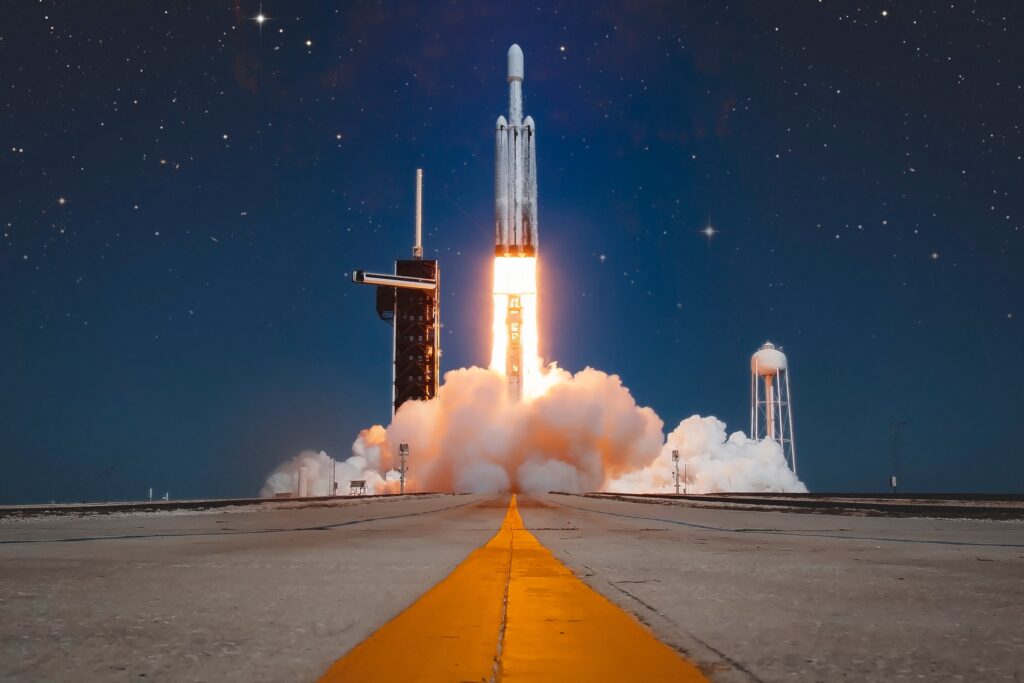A SpaceX rocket exploded just moments after lifting off from Texas on Thursday, bringing flights to a halt and raising concerns about falling debris. The unexpected blast led to temporary flight delays in Orlando, Miami, and Palm Beach as officials worked to assess potential dangers.
SpaceX confirmed that the uncrewed rocket suffered a “rapid unscheduled disassembly” while ascending. The company lost contact with the spacecraft before it could complete its intended mission. The massive Starship, known as the largest rocket ever built, spiraled out of control before breaking apart. Although no injuries or property damage have been reported, residents in Caribbean nations captured footage of fiery debris falling from the sky.
Second Consecutive Starship Test Failure
This mission marked the eighth test flight for the Starship system and its second consecutive failure. The 123-meter (403-foot) spacecraft was expected to complete a one-hour flight, re-entering Earth’s atmosphere over the Indian Ocean. Instead, the rocket broke apart soon after launch, cutting the mission short.
Despite the failure, the Super Heavy booster, responsible for lifting the spacecraft, successfully detached and returned to the launchpad. SpaceX stated that engineers had begun working with safety officials on “pre-planned contingency responses.”
The company reported that the explosion followed the loss of “several” engines during ascent. However, they reassured the public that the spacecraft did not contain hazardous materials. SpaceX provided an email and phone number for those who might come across debris from the failed launch.
“As always, success comes from what we learn, and today’s flight will offer additional lessons to improve Starship’s reliability,” SpaceX said in a statement.
Safety Concerns and FAA Investigations
Following the explosion, the Federal Aviation Administration (FAA) briefly grounded flights at several Florida airports due to safety concerns. Officials cited a “space launch incident” as the reason for temporary closures.
This failure comes just months after a similar test in January, where a Starship rocket failed minutes after liftoff. That explosion caused property damage in the Turks and Caicos Islands, leading the FAA to halt Starship launches. The investigation into that failure remains open.
Authorities in the Turks and Caicos Islands confirmed they are in discussions with US officials and SpaceX to ensure public safety. Videos posted on social media appeared to show burning debris falling into the Caribbean Sea. In the Bahamas, residents reported taking shelter to avoid possible wreckage from the rocket.
Starship’s Role in Space Exploration
Starship, the most powerful rocket ever constructed, plays a crucial role in Elon Musk’s vision for interplanetary travel. He hopes that future versions will transport humans to Mars, making space colonization possible. NASA also intends to modify Starship for its Artemis program, which aims to send astronauts back to the Moon.
Musk has stated that Starship will eventually complete round trips to Mars, with each journey lasting around nine months. Despite this latest setback, he remains confident in the rocket’s potential.
SpaceX is now working on refining the Starship system to ensure better performance in future launches. The next test flight will depend on the FAA’s review and approval. Until then, engineers will continue analyzing data from the failed launch to make improvements.
As SpaceX pushes forward with its ambitious goals, the world will be watching to see if Starship can overcome its early challenges and become the reliable spacecraft it is designed to be.
For more updates on this story and other breaking news, visit New York Mirror.


